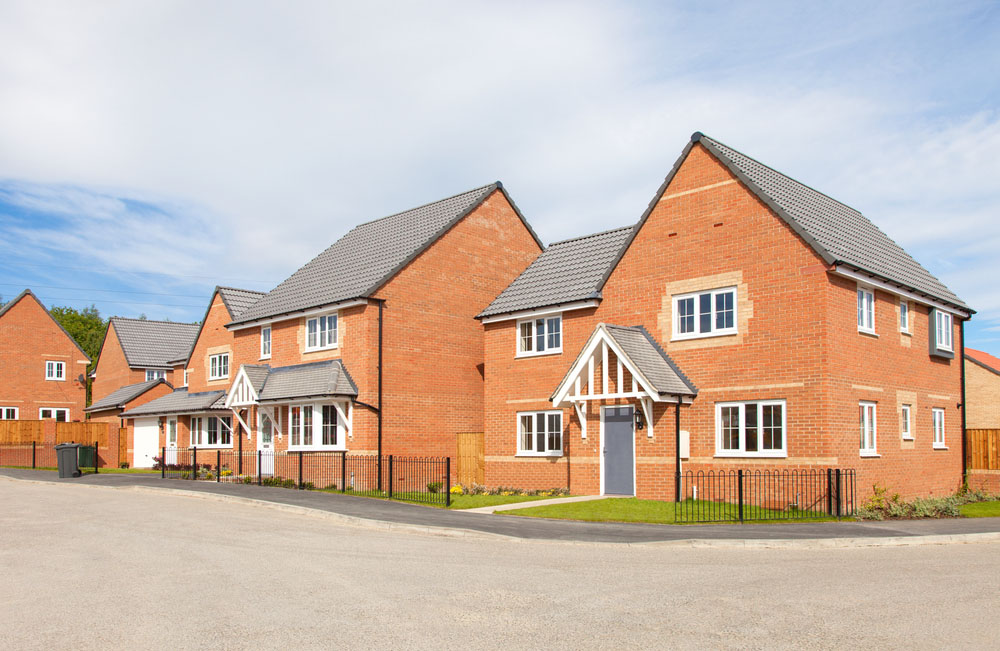Building Towards Net Zero: The Future Homes Standard Consultation
On 13th December 2023, the Department for Levelling Up, Housing and Communities (DLUHC) released the long-awaited consultation on the next revision to energy efficiency standards in Building Regulations in England, known as the Future Homes Standard (FHS).
This article provides an overview of the changes proposed for domestic buildings. We will shortly be releasing a separate article covering all non-domestic changes proposed in the Future Buildings Standards.
.

What is the Future Homes Standard Consultation?
The Future Homes Standard (FHS) consultation sets out Government plans for achieving the Future Homes Standard and Future Buildings Standard. These standards aim to decarbonise new homes by focusing on improving heating, hot water systems, and reducing heat waste; ensuring they are better for the environment and fit for the future.
This FHS consultation builds on the initial details proposed in the 2019 consultation: The Future Homes Standard, 2019. The current consultation will close at
What Does the Consultation Propose?
Elmhurst has taken time to read through the open consultation and has highlighted some of the changes proposed below.
Performance Standards for new homes
In the initial consultation in 2019, the industry was given some insight into the standards which the FHS would introduce. This was expected to be a 75-80% reduction in carbon emissions compared to a home built in accordance with Part L 2013. This would be driven by changes to the notional dwelling specification which is used to set the target metrics in Building Regulations. It was proposed that the building fabric would be significantly improved over Part L 2013 and low carbon heating would need to be used to meet the standard.
In the latest consultation, there are two options proposed for the notional dwelling that will set the compliance standards. Both options broadly retain the fabric standards from Part L 2021, use a heat pump/low carbon heat network to provide space and water heating and will deliver a minimum 75% improvement over Part L 2013. However ‘Option 1’ also includes the use of decentralised mechanical ventilation, waste water heat recovery and photovoltaic panels. Option 1 will deliver lower running costs for the occupant, but higher upfront costs for the builder.
Metrics for energy efficiency
In Part L 2021 there are three whole dwelling metrics used to indicate the efficiency of a home. These are Primary Energy, Carbon Emissions and Fabric Energy Efficiency. After consideration of some alternative metrics, such as Energy Use Intensity, the Government has proposed that the Future Homes Standard uses the same three metrics as Part L 2021 which will be calculated by the new Home Energy Model methodology.
Standards for Material Change of Use
Work that involves a material change of use, usually known as a conversion, is subject to Building Regulations and standards in Part L. However these standards are lower than for a new dwelling and simply set minimum standards for fabric and services. Unlike new dwellings, there are currently no whole dwelling performance metrics used for conversions so any type of building service can be used, including mains gas, oil or LPG boilers.
It is proposed that a material change of use be subject to a whole dwelling performance standard to improve performance. This would be in the same manner as a new build; by the use of a notional dwelling to set the target rates. The notional dwelling would be different to the one used for new dwellings to set an appropriate level of performance for this type of work.
Finally, there are also proposals to introduce the BREL report, photographic evidence requirement and airtightness testing for material change of use work.
Real-world performance of homes
In Part L 2021 there was a recognition of the performance gap between real-world performance compared to modelled performance of homes. Measures such as build quality guidance and photographic evidence were introduced to tackle this issue.
In this consultation, further measures are proposed. Voluntary performance testing of new homes using technology, such as SMETERS or Heat Transfer Coefficient testing, is proposed. Where this is undertaken by a developer they will be given a Government endorsed Future Homes Standard brand/logo.
There is also a focus on the commissioning of services. For mechanical ventilation, it is proposed that this is undertaken by members of a Competent Persons Scheme and completed in both new homes and work to existing homes. Approved Document F will be updated to account for these changes.
Accounting for exceptional circumstances
Under Regulation 11 of The Building Regulations 2010, developers can apply to the relevant local authority to relax or dispense with a requirement in the Building Regulations. A local authority should grant relaxation or dispensation if it judges the requirement to be unreasonable. However, currently, this cannot be applied to Regulation 26 – which requires new homes to meet the target emissions rate.
It is proposed that Regulation 11 be amended to allow relaxation of Regulation 26 – meeting the target emission rate. Developers could apply to the local authority or Building Safety Regulator for relaxation of the requirement and the consultation is asking for examples where it is believed a relaxation of the requirements would be appropriate. An example given in the consultation is where a new home is part of a development subject to a trial using hydrogen for heating therefore the energy efficiency requirements are not applicable. Finally, there is a proposal that local authorities would have to submit the applications received and decisions made to the Building Safety Regulator for review.
Transitional Arrangements
Transitional arrangements apply where a new version of Building Regulations is introduced to allow developers some continuity of standards where sites are already under construction. However, to ensure as many new homes as possible are built to the Future Homes Standard these are now under review.
To help the industry prepare once the regulations are announced there are two options proposed in this consultation. A period of either six months or twelve months from laying the regulations to them coming into force. Both options will be followed by a twelve-month transition period in the same manner as the transitional arrangements for Part L 2013 to 2021 were applied.
Additionally, there is also a proposal to end the transitional arrangements for sites being built to Part L 2010 and 2013. This will be done by removing the site-wide transitional arrangements that were used for these two versions of Part L. This will apply transitional arrangements to each individual dwelling. So for a site still being built to Part L 2010 or 2013, if construction on a dwelling has not commenced by one year after the FHS has been introduced, it will need to be built to the FHS.
Finally, there is a revised definition of commencement of work that will be adopted for the application of transitional arrangements. Regulation 46A now defines commencement as “work is to be regarded as commenced when the sub-surface structure of the building or the extension including all foundations, basement level (if any) and the structure of ground floor level is completed”. This will now require the ground floor to be constructed to avail of the transitional arrangements, whereas previously simply constructing foundations was deemed as a commencement.
Part O
The Government are seeking views in regards to the implementation of Part O in new homes. It is intended that Part O will be updated based on responses but there is no timeline set for this currently. Specifically, the consultation is seeking views on the simplified method, detailed method and other key areas of the Approved Document.
There is also a proposal to widen the scope of Part O to apply where there is a material change of use and a call for evidence to cover where adding an extension or conversion impacts overheating risk on existing buildings.
We know Part O has been a significant challenge since its introduction and we are sure the industry will have lots of views and feedback to supply to DLUHC in this section of the consultation.

Elmhurst Response
Jason Hewins, New Build Dwellings Manager, comments:
“The Future Homes Standard consultation is a significant step in the journey to net zero. There are many proposals which were expected, such as the switch to using a heat pump in the notional dwelling to set the performance standards and the introduction of measured energy performance into Building Regulations is also welcomed by us.
We will now start to collate our thoughts on the specific consultation questions and as always publish our draft response for members to provide feedback on in advance of the consultation closing in March 2024. We will also be publishing a separate article covering the consultation on the Home Energy Model, which is a proposed replacement to the existing SAP Methodology, shortly.”
To view the open consultation, click the following link: https://www.gov.uk/government/consultations/the-future-homes-and-buildings-standards-2023-consultation
